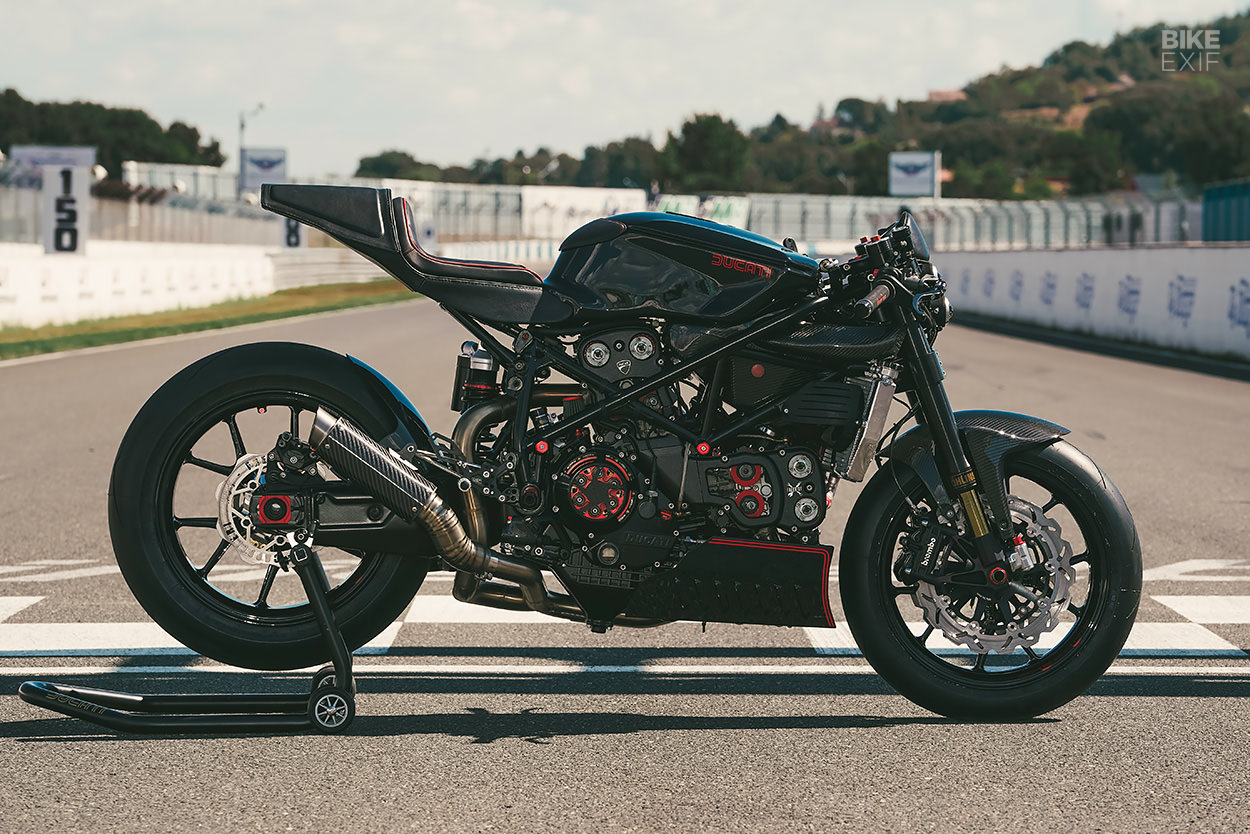
There’s no doubt that the Ducati 999 is set to become a future classic. Pierre Terblanche’s aggressive design polarized opinion when it first broke cover, but it didn’t matter; the 999 was proper fast, and took three titles in its tenure on the World Superbike circuit. And its looks have grown on most people over time—like a movie that gets panned by critics at first, only to become a cult classic later.
So if it’s that great, why customize it? For Pierre Dhers at Freeride Motos, the answer is simple: it was the best possible donor for this project.
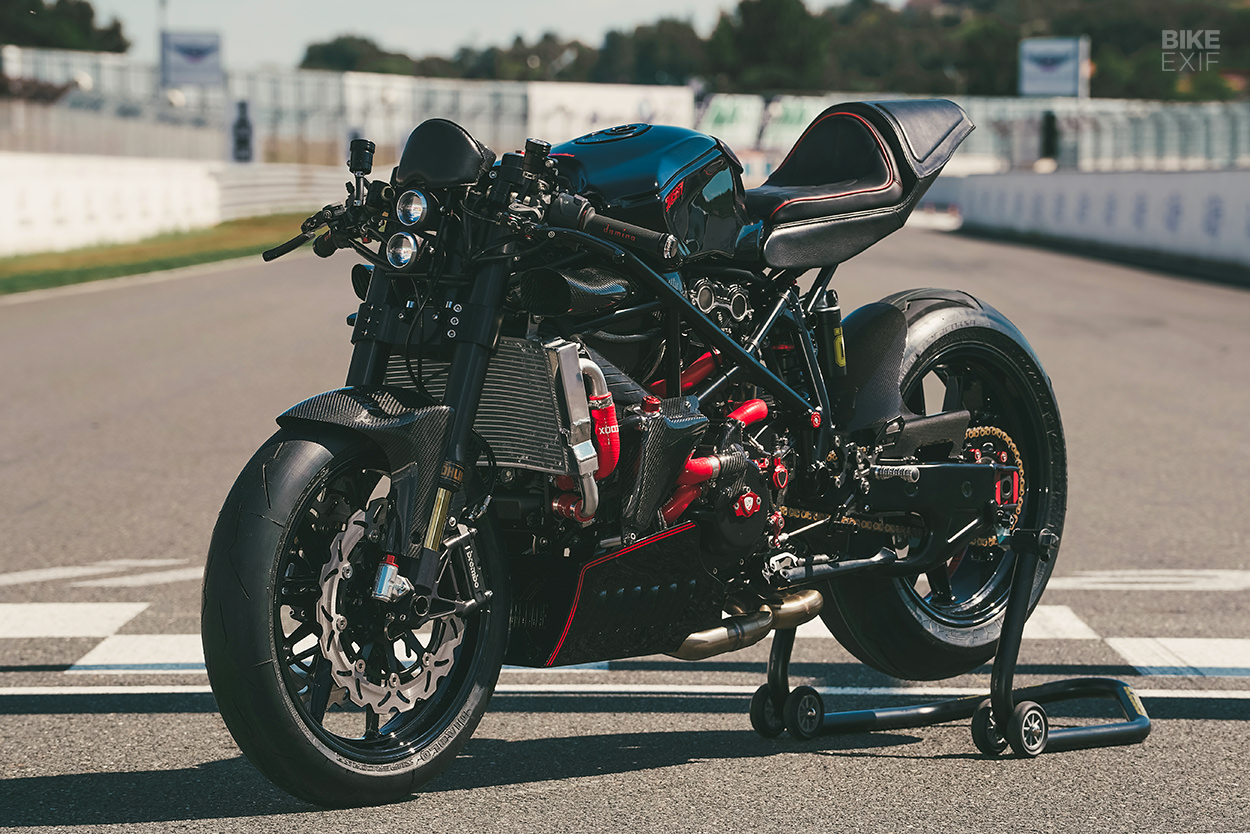
The 999’s owner is an avid Ducati fan and a regular at track days, and initially asked Pierre to build him a Ducati 900 SS-based cafe racer. But the French builder had something better in mind: a cafe racer with actual track-level performance, based on the much faster 999.
“The project was quickly defined,” says Pierre. “No umpteenth 900 SS cafe racer, but rather a real transformed superbike. Performance, with a nasty look and high-end equipment.”
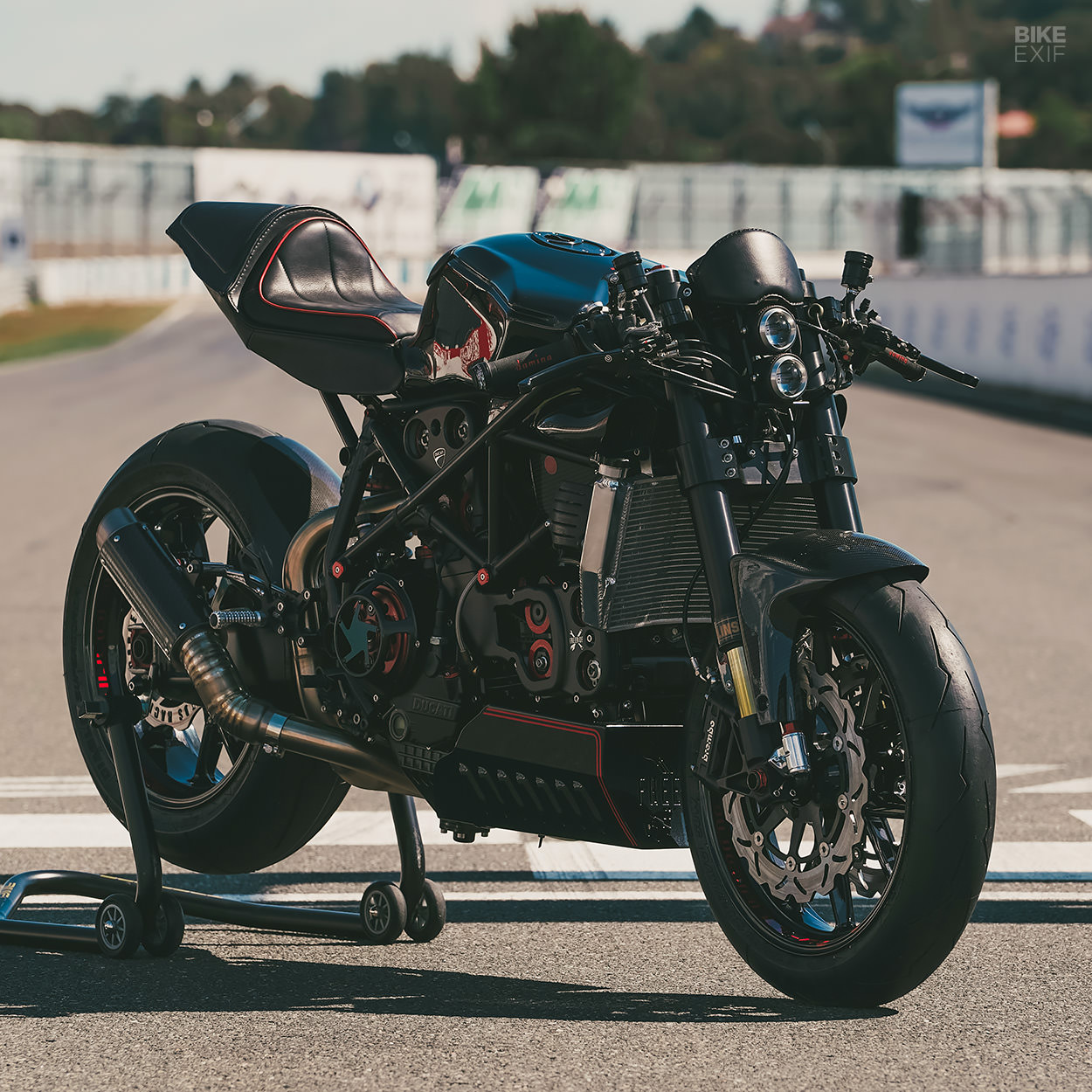
The client agreed, sourced a 2005-model Ducati 999, and delivered it to the Freeride Motos workshop. He picked a fine year too—the 999 was upgraded in 2005, to the tune of 140 hp and 108.9 Nm. But Pierre’s made this one even quicker and lighter, thanks to a laundry list of carefully considered mods.
Aesthetically, Pierre’s first thought was to remove all of the 999’s stock bodywork. But after some back and forth with his client, the call was made to retain some of the original 999 DNA by keeping the OEM fuel tank. As for the rest, Pierre hand-shaped a number of aluminum pieces to re-dress the Ducati.
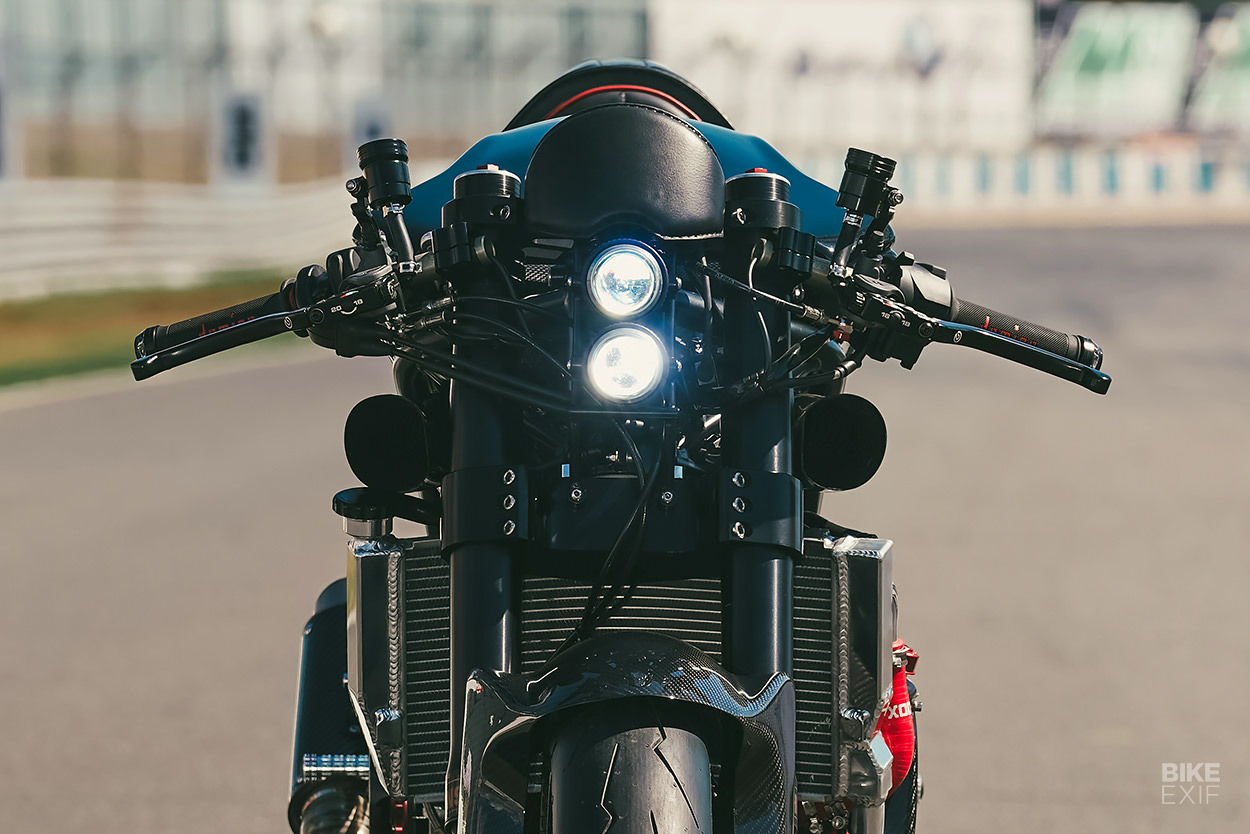
The new headlight arrangement features two projectors held in a hand-made bracket, and topped off with a small nacelle. The lights have been deliberately stacked vertically, as a nod to the original design.
Out back, Pierre fabricated a new cafe-style tail unit, which sits on a new bolt-on subframe and features an integrated taillight. The leatherwork is particularly noteworthy; Freeride Motos is based in Graulhet, in the southwest of France, which is an industrial town known for its leather. And Pierre wanted to show that off.

To that end, the seat, tail hump, front screen, tank pad, and even the ignition, have all been wrapped in high-grade leather. Christophe from Akotabe was called in to handle the upholstery and did a stellar job, with subtle contrast stitching and piping to tie everything together.
The last couple of hand-made parts include a pair of radiator wings and a generous belly pan. It’s not just for show though—Pierre repackaged the Ducati’s wiring, and the belly pan now holds the vital bits along with a lithium-ion battery.
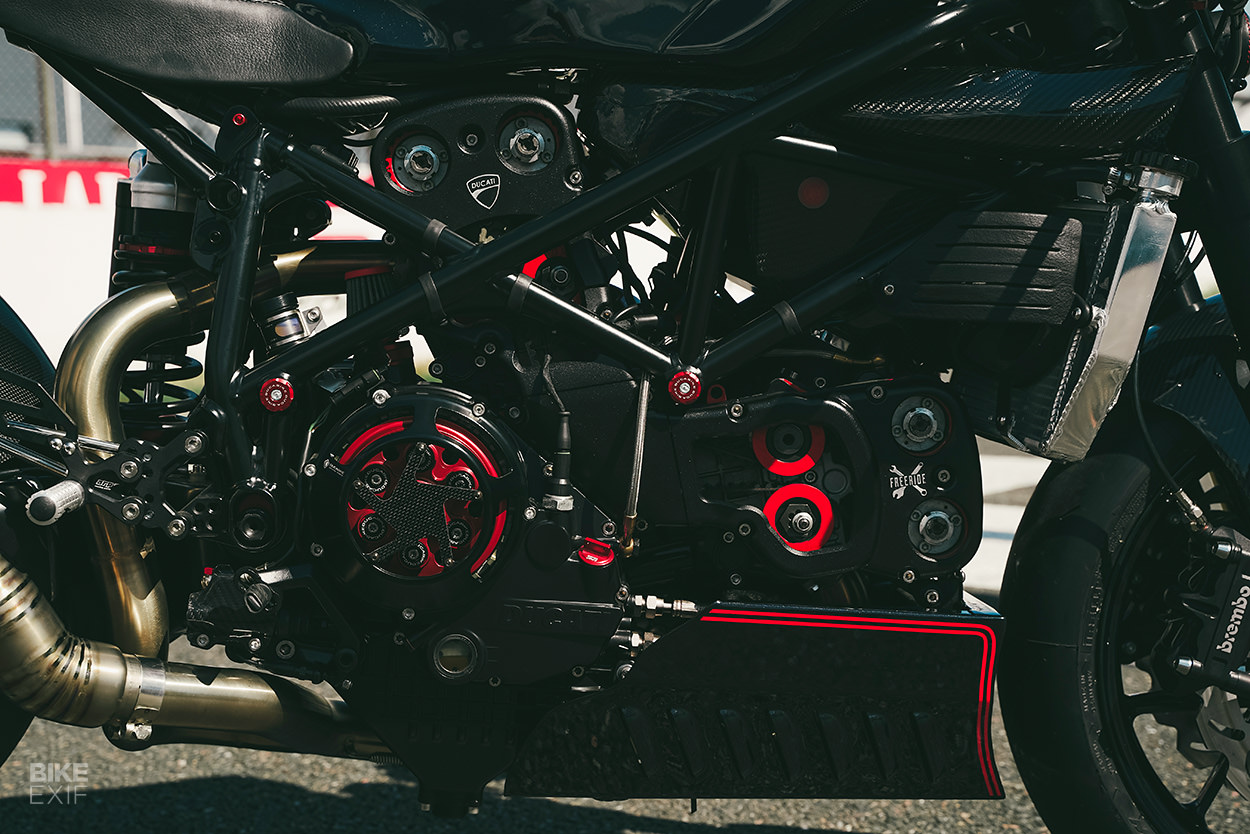
There are some carbon fiber bits to complement the metalwork too; a front fender, rear hugger and chain guard combo, sprocket cover, and a full carbon air box from EVR.
But Pierre did more than just slap on that air box and call it a day. He also painstakingly tacked together a custom stainless steel exhaust system, paying particular attention to the header lengths. Then he handed it over to Armand at Atelier Bam to do the final welding.
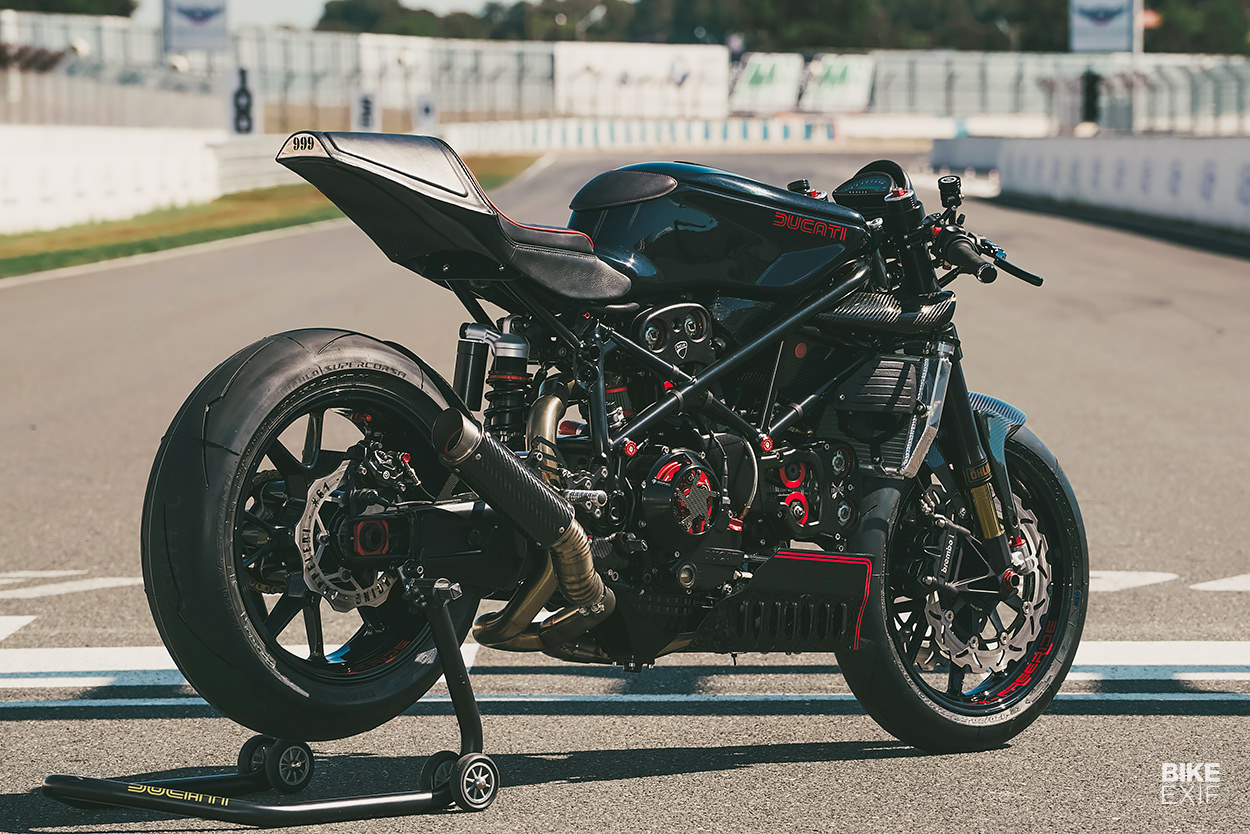
Once that was sorted, the bike on the Blackhat Motorcycle dyno to fine tune it. It now makes 9.9 hp more, with a torque increase of 15.6 Nm.
Pierre’s also upgraded the Ducati’s running gear to suit. The ‘base’ model 999 didn’t come with the Öhlins suspension of the top-spec 999R, so that was the first thing on the list. On went a set of Öhlins forks from an Aprilia Tuono, held in place by a set of custom-machined yokes
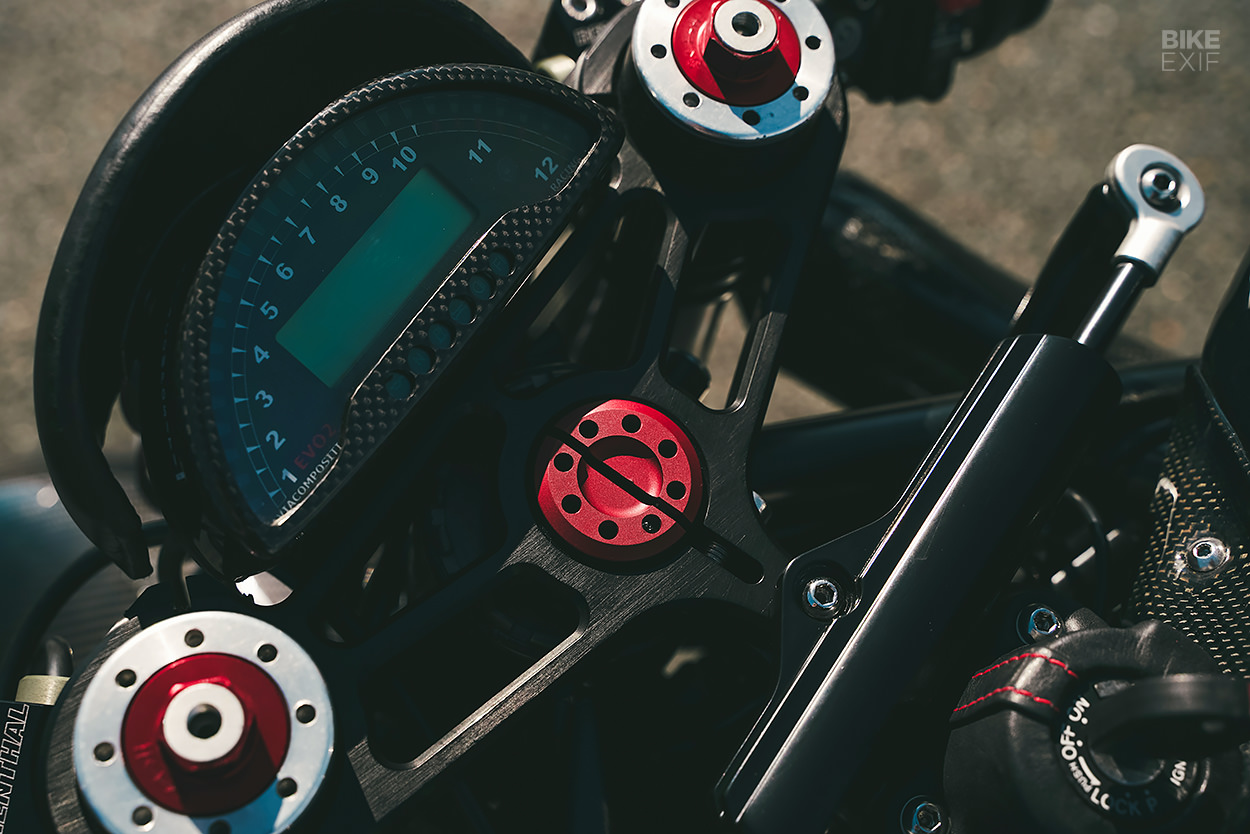
Up in the cockpit you’ll find an Aviacompositi dash, along with Renthal clip-ons, Brembo controls, Domino grips and Motogadget turn signals.
An Öhlins rear shock was installed too, and all the suspension components were stripped and refinished in black and red. The brakes were upgraded with Brembo parts and new hoses, with a custom rear disc made to size. Pierre kept the 999’s stunning Marchesini rims, but had them repainted.

Rémy of Art Scratch Paint finished off the 999 in a pearly metallic black, with a few red details that are echoed in the bike’s many anodized parts. There’s also a carbon fiber coolant bottle with red silicon hoses, and a bunch of Ducabike and CNC Racing parts, including a slipper clutch.
There’s a lot more to take in—from obvious details like the cross-sectioned engine belt covers, to hidden upgrades like a full complement of stainless steel fasteners.
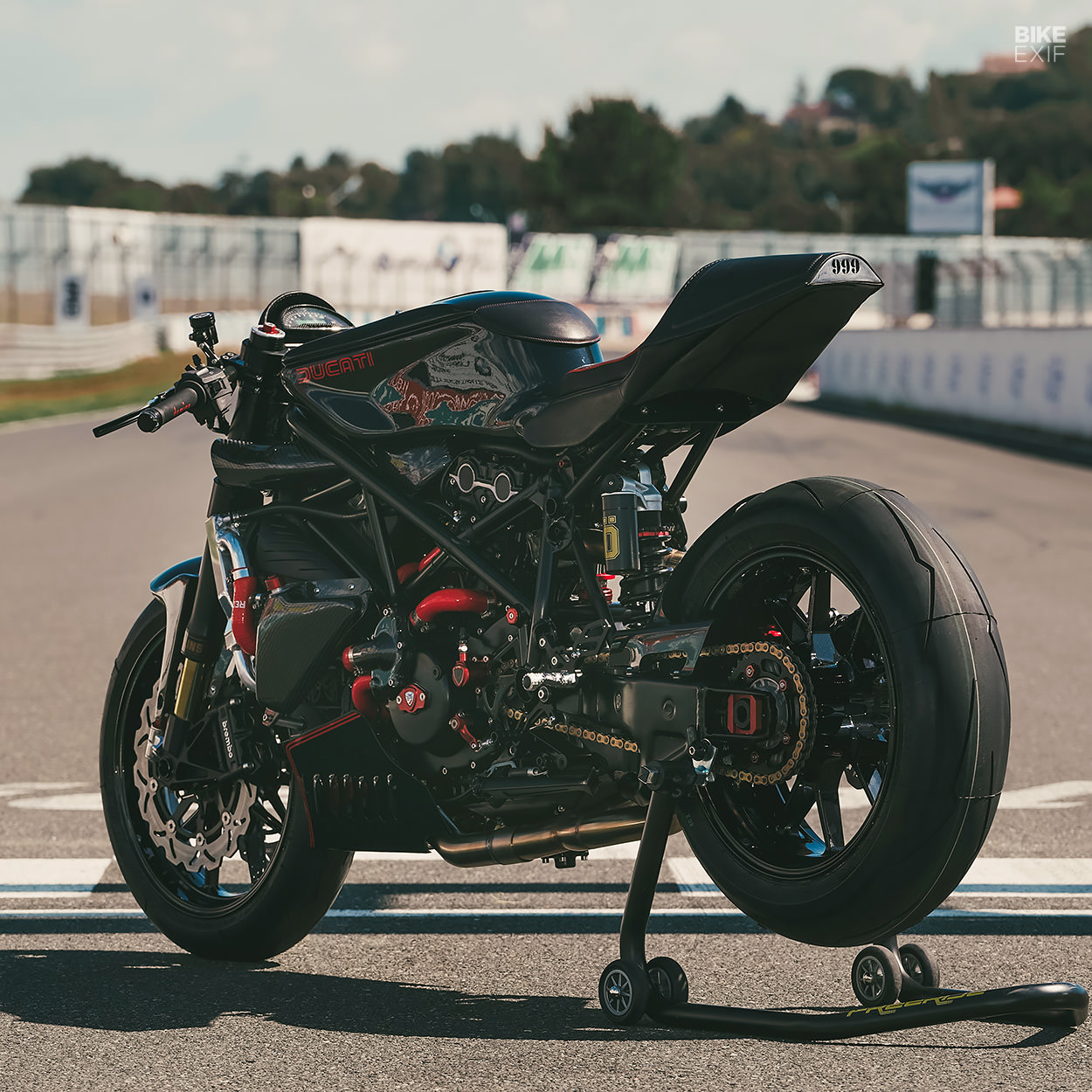
The Ducati 999 is ultimately a bike that doesn’t need to be fiddled with. But Pierre’s knocked this one out the park, and makes a compelling case for how to do it right. It not only looks absolutely stellar, but should also be a total hoot on both the street and the track.
And if you’re a Ducati mega-fan that’s gone into apoplectic shock at the sight of this, relax: the owner has a stock 999 in the garage, too.
Freeride Motos Racing | Facebook | Instagram | Images by Kevin Abelard
Video by Fabien Goncalves and Kevin Abelard (Love Machines Documentaire)